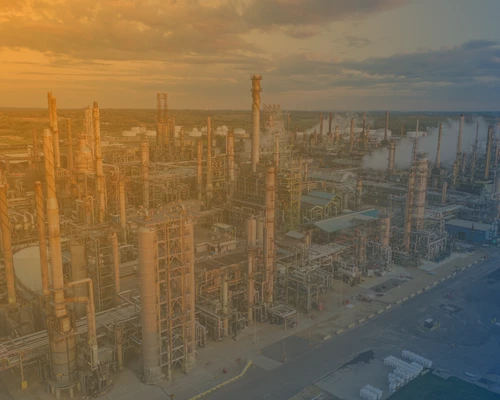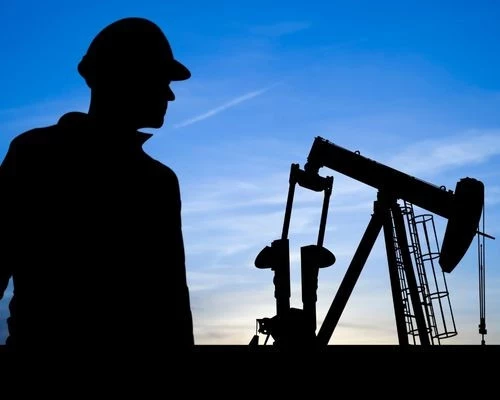
As oil and gas companies aim to drive operational efficiencies, capture tribal knowledge from experienced employees, keep workers safe, and more effectively onboard, train and upskill new workers, many are looking at how they can better connect workers to the information and resources they need to do their work.
Connected worker technology is a class of software, which includes artificial intelligence, cloud computing, mobility, IIOT, wearables and AR/VR, that can help guide workers as they carry out their work. By connecting workers to critical resources just as they need them or alerting them to important changes in a machine or environment, connected worker technology makes employees more effective and safer.
TotalEnergies, for instance, has outfitted maintenance technicians with a RealWear helmet. The helmet has an integrated eye piece and video camera that allows the worker to connect remotely to subject matter experts and gives field workers immediate access to visual information and about procedures and machine specifications. The video camera allows the remote subject matter expert to see what the worker sees in order to provide more effective support.
The helmet has been a gamechanger, according to Blake McFall, maintenance manager at TotalEnergies’ polypropene plant in LaPorte, Texas where the helmets were first rolled out. It has cut down on the time it takes workers to get additional support to troubleshoot complicated machines and has become an essential part of their shutdowns and turnarounds at the plant.
READ: How High-tech Helmets and Huddle Boards Drive Efficiency at TotalEnergies
Clearly, Connected Work promises enormous benefits for the companies that can harness it.
However, as Daniel Grobe, Co-founder and CCO at Operations1 pointed out recently, much of the reality of so-called digital transformation in heavy industry today amounts to no more than PDFs on tablets and large screens.
So what does it take for oil and gas companies to harness digital technology and drive real business benefits with connected worker technology? Here are a few key lessons from our global connected worker conference series:
Lesson #1: One size doesn’t fit all
Every organization has a distinct corporate culture and level of digital savviness. What may have worked at another company may not be right for yours. You must find the path that works for your people and your company.
READ: Connected Worker Technology: “Get the Right People on the Bus”
Lesson #2: Don’t start from a technology perspective
It can be all too tempting to get excited about a specific technology and then get lost in the technical details it takes to implement it. However, you need to start first with the strategy and the value that a new way of working will bring to the organization and the shopfloor. Technology may or may not be part of that new way of working.
Lesson #3: Solutions must be simple and easy to use
Nobody enjoys learning a complicated and unintuitive system that makes their life more difficult. Workers simply won’t use a new system that isn’t easy. One solution that does multiple things is better than several specialist systems, for example, because it reduces the learning curve and the need to switch between systems.
Lesson #4: Better to wait until people are asking for a solution than to impose it on them
Imposing an unwanted solution on a plant or refinery is an effective path to failure. You may be able to drive it through initially but workers will not use it in the long run and the business will struggle to realize the benefits from the new technology. Work first with your company’s early adopters to demonstrate value and other sites will follow.
READ: EDF’s VP of Digital Transformation on Avoiding Epic Failures by Developing Empathy for Users
Lesson #5: Small, incremental steps are better than a big bang
Digital transformation can get complicated very quickly, especially if you try to tackle everything at once. Digital leaders at our conferences agree that it’s better to take small projects and deliver them, than it is to try and get everything done at once.
It’s common for many organizations to start with a Minimum Viable Product (MVP). This allows you to quickly demonstrate the business benefit of a new technology and get it working in a real environment right away.
Lesson #6: Engage your workers early on
User adoption is your ultimate metric of success. But too many digital transformation projects fail at this crucial hurdle. You need to observe and engage your workers early on to understand how they currently work and how any technology solution will help them.
Remi Raphael, VP of Digital Transformation at EDF Renewables, recounts how one digital solution they implemented failed because they hadn’t observed the amount of equipment a worker needed to carry in order to do their job. Their solution had required workers to carry a tablet on top of their existing load – something that workers just couldn’t do in the environments they needed to do them.
“If we had just observed the daily routine and understood their job, we would have saved time, money, and digital reputation. We were thinking from a siloed lens of how great tablets would be for mobility,” explained Raphael.
What do you think? Did we miss anything?
Interested in learning more about this topic?
Join over 200 industry leaders on November 15-17, 2022 at our Connected Worker conference in Chicago and learn how to build a connected workforce to improve resilience, agility and growth in a recovering economy. Download the agenda here.
























